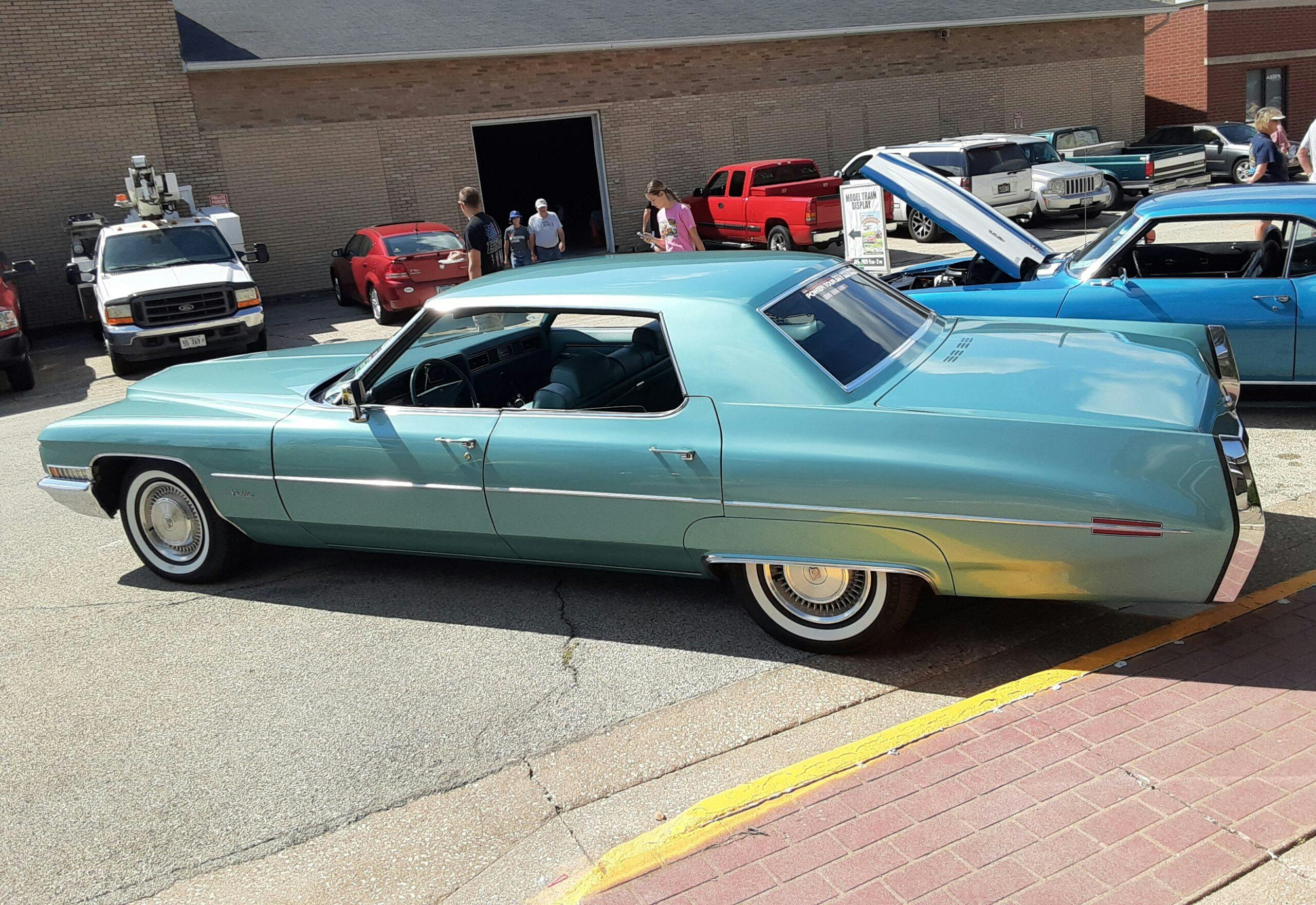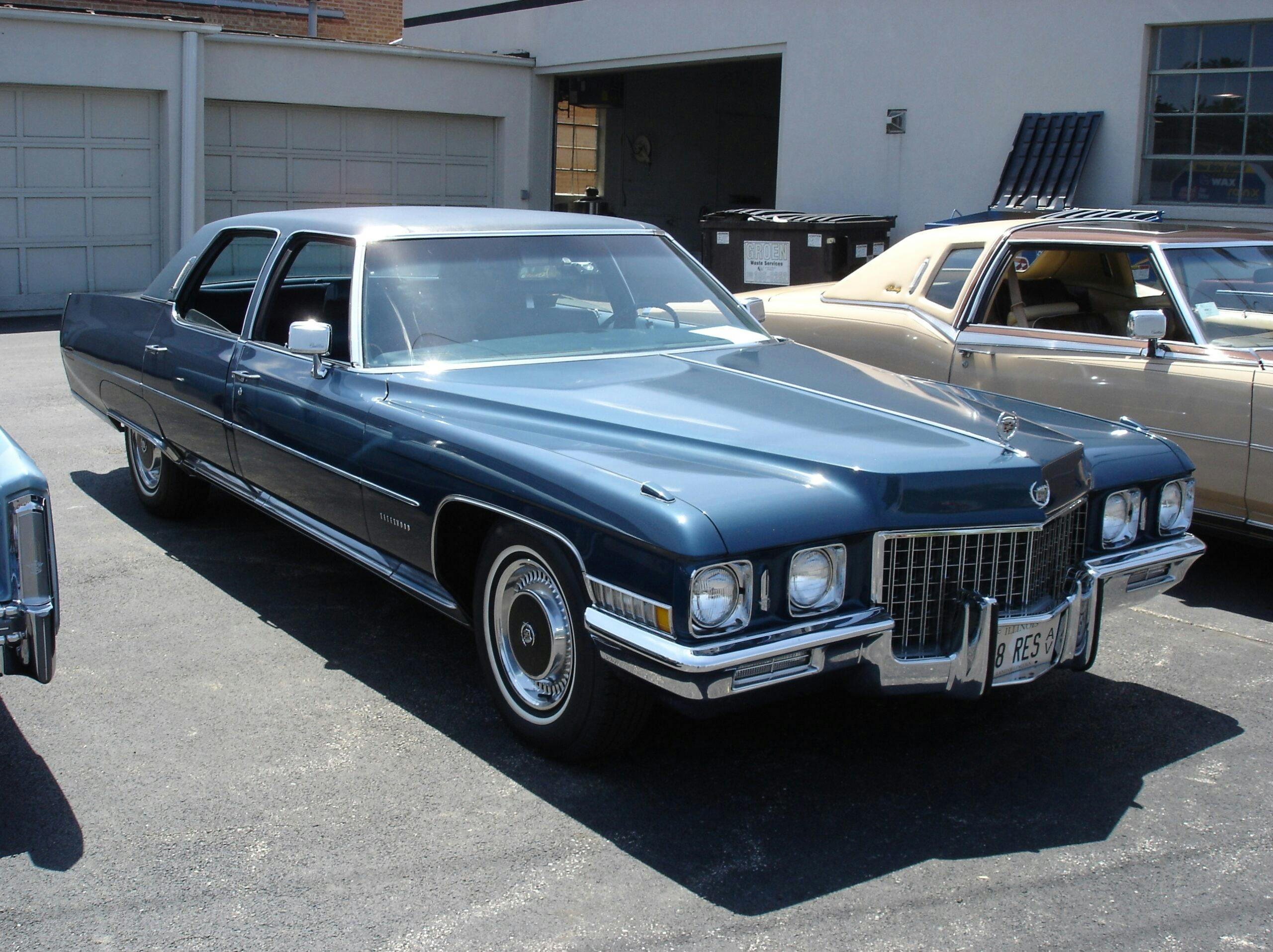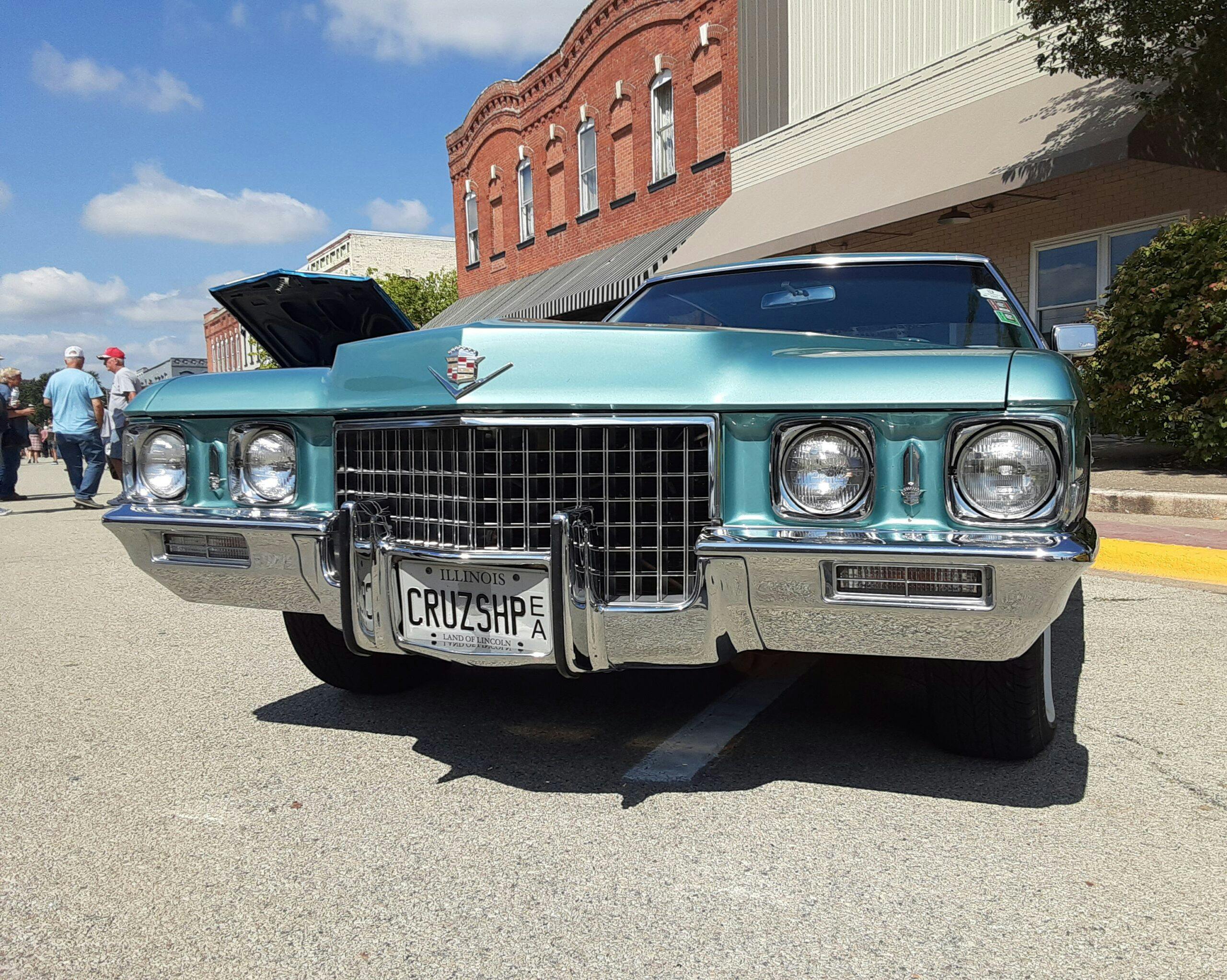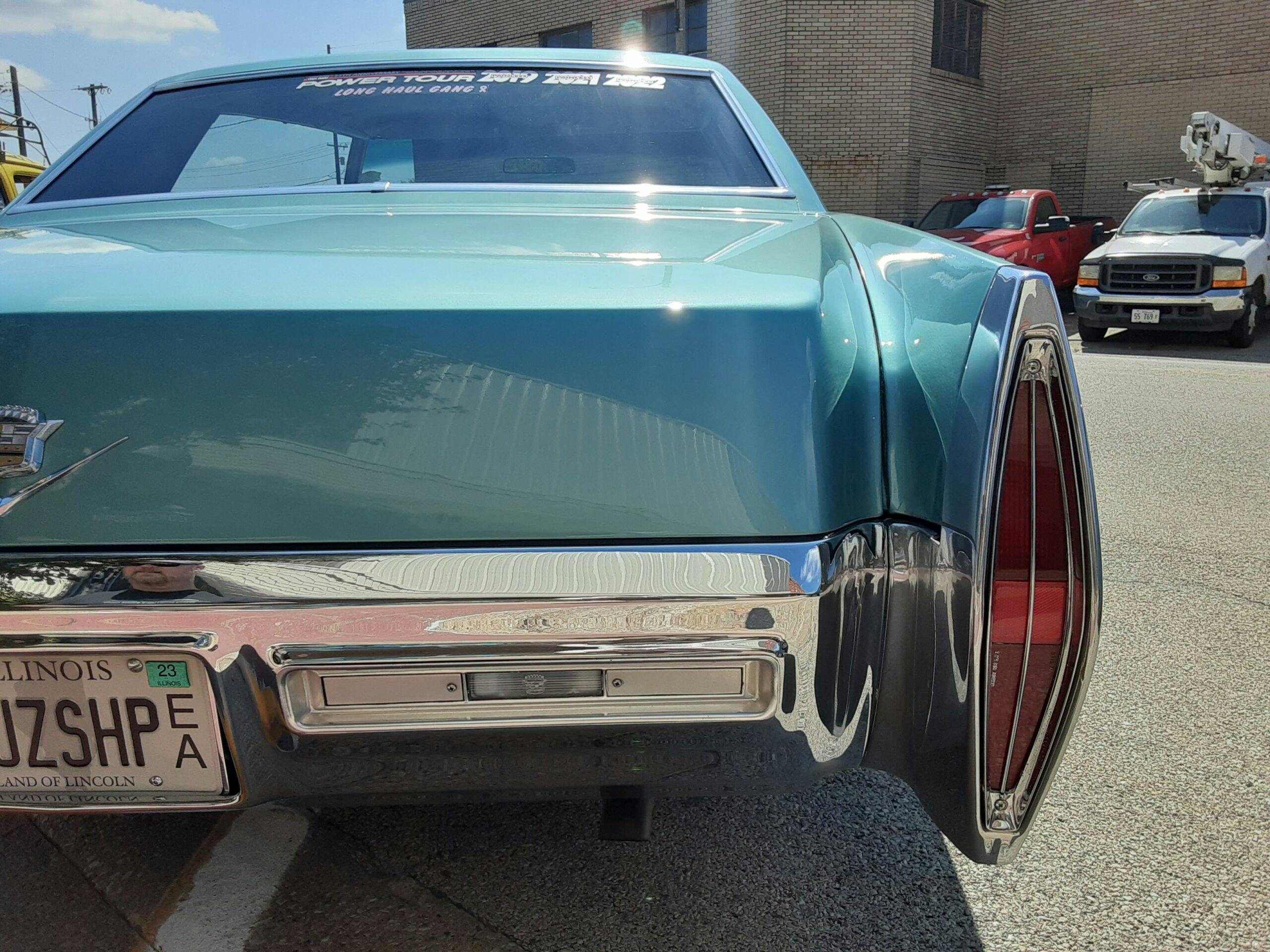Media | Articles
1971 Cadillac Calais: A Series 62 by Any Other Name…
For folks of a certain age, say “Calais” and many will probably think of the small Oldsmobile of the mid-1980s. But well before the GM N-body Calais, later renamed Cutlass Calais and sharing a platform with the Pontiac Grand Am and Buick Somerset/Skylark, the Calais was the first step in Cadillac ownership.
Well, at least since 1965. Prior to that year, the least expensive Cadillac (please don’t call it the cheapest—it was still a Cadillac, after all) was the Series 62. Of course, it had the same body, dimensions, and excellent engine and transmission as all the other Cadillacs, but the interior was, if not spartan, definitely less flossy than, say, a Coupe de Ville.
But it was popular. Indeed, it was the primary go-to Cadillac for many years. In 1953, 47,316 four-door sedans, 14,353 coupes and 8367 convertibles were built. While the pillarless Coupe de Ville first appeared in 1949, by the early 1950s it was sharing its basic body with the Series 62 two-door hardtop, but had a much more luxurious interior.
Then in 1956, the first Sedan de Ville appeared—one of GM’s trio of the all-new C-body four-door pillarless hardtop body style. At $4698 it was about $450 more than the pillared ’56 Series 62 four-door sedan—and not near as swoopy. As a result it sold about 15,000 fewer copies.
It was still a Cadillac staple, though, and in 1960, 26,824 six-window Series 62 sedans and 9984 four-window sedans sold. Then in 1965 the Series 62 was, in keeping with a completely new body (and missing the signature fins for the first time since 1948), renamed the Calais. It held the same spot in Cadillac hierarchy. Available body styles included a two-door hardtop, four-door hardtop, and a four-door sedan.
Marketplace
Buy and sell classics with confidence
By this time the de Ville series was passing the Series 62/Calais by in popularity. Just in four-door sedans, the Sedan de Ville outsold the equivalent Calais 15,000 even to 7721.
In 1971 Cadillacs were once again all new inside and out. And the Calais returned. It turned out that this would be the last all-new Cadillac Calais, ever.
The ’71 de Ville and Calais were only 0.8″ longer than the 1970 models, but looked much longer and lower in person. They were also perhaps a bit less opulent and excessive interior-wise as previous versions, but your author, having once sat in a navy blue ’71 Fleetwood Sixty Special Brougham owned by my friend Andrew Bobis, would respectively disagree.
The slick-top Sixty Special was no more, with the Fleetwood Brougham, with its padded roof, remaining as the top “owner-driven” Cadillac. But Cadillac marketers, hedging their bets, renamed it the “Fleetwood Sixty Special Brougham” for ’71. All had the padded top. This designation would continue through 1972, then be quietly retired and “Fleetwood Brougham” became the norm again.
But we were talking about the Calais, weren’t we? As always, it was at the opposite end of the Cadillac line compared to the Brougham, but was still a looker with its new sheetmetal and smooth lines.
It was even smoother as the Calais was the only Cadillac in which you could not get a vinyl roof from the factory. Though of course many enterprising Cadillac dealers would put one on if you asked nicely.
But really, that’s a plus these days if you’re lucky enough to find a ’71 Calais. Those vinyl tops looked good, but let’s face it, over years they’d deteriorate and unless you lived in Phoenix, they’d trap water and rust the top from the inside out. Lots of trouble. At least now, 50-odd years later.
For 1971, the Calais came in just two models, a two-door hardtop and the four-door hardtop. There were, for the first time, no convertibles on the standard Cadillac body, with the final de Ville convertible coming off the line at Clark Street in Detroit in 1970. No, the convertible was moved to the Eldorado this year, and a baroque beauty it was, but I’m digressing again! Another time.
The Calais four-door hardtop had a base price of $6075. Remember I said that the Calais’ popularity was going downhill? It was very apparent in 1971. Even with an all-new body, only 3569 were built. And this was the most popular Calais. The two-door hardtop, despite being slightly less expensive at $5899, sold even fewer, to the tune of 3360 units.
Meanwhile, the $6498 Sedan de Ville sold over 69,000 copies, though it must be said the Calais was rather plain when parked next to a Coupe de Ville or Sedan de Ville. They had almost no exterior chrome other than on the front and back ends; a thin side molding was the only adornment to its ample flanks.
I imagine folks walking into a Cadillac dealer showroom looked at a Calais, then at a de Ville, and thought, “I think it’s worth the extra four hundred bucks.”
As the ’71 Cadillac brochure confided, “The Calais is the easiest step to experiencing the pride and pleasure of Cadillac ownership. The brilliant new Cadillac styling and elegant interior appointments, the long wheelbase, the big Cadillac engine and increased-capacity brakes—these and other outstanding features mark the Calais as a true luxury car.”
It was certainly Cadillac priced. Despite looking perhaps a bit plain compared to a Coupe de Ville or Fleetwood, the four-door Calais’ sticker was still more than a Buick Electra 225 Custom ($5093) or Oldsmobile Toronado ($5449) and was within spitting distance of a Chrysler Imperial LeBaron two-door hardtop ($6044).
This may explain why sales for each body style failed to even hit 5000. It was the bridesmaid, not the bride. It just didn’t look as snazzy parked at the country club as, say, a red Coupe de Ville with white top and white leather. And you couldn’t get leather on a Calais anyway.
The two Calais interior upholstery choices included Darlington cloth, a “satin-finish fabric tailored with vertical piping and a horizontal vinyl insert,” again referring to my brochure, which is what our featured car sports. It would be my pick. This choice came in six different colors; the other option was an all-vinyl interior, available in two colors.
But at any rate, the Calais continued through the late 1970s as the easiest choice into joining the Cadillac family. The final year was 1976, which was the final year for this generation. Come 1977, the Calais was no more, and the least expensive Caddy became the Coupe de Ville.
I heard about our featured car before I saw it: My friend Dave Mitchell, who we visited at his shop the day before a car show, told us a friend of his from high school owned it, and he’d stopped by less than an hour before we arrived. I vowed to find it at the show, and the result is the photos you see here. I just adored it—especially the Adriatic Turquoise paint with matching interior! It was the first ’71 Calais I’d seen up close, ever.
And she was a beaut!
***
Check out the Hagerty Media homepage so you don’t miss a single story, or better yet, bookmark it. To get our best stories delivered right to your inbox, subscribe to our newsletters.
















































A fine example. My first Cadillac was a 1968 Calais Sedan, that the local Ponitiac dealer had taken as a trade. They disclosed that they could not keep the battery from dying, while driving, and reached out to the 19 year old me, offering it for 250.00. She was a beauty, with less than 100k, and a new battery, alternator, and alternator belt. This was 1977. Sure enough , on the way home. 11 miles, she slowly came to a stop at the local Quaker State Gas Station. I relayed the symptom, and the proprietor Went to his stack of belts, and retrieved a new belt, for the crankshaft pulley to the water pump Pulley. Problem solved.
It looked great, and ran well.I was not much for the brocade interior, but I toughed it out. Light blue metallic, and great in the snow. I do not remember how we parted company, but I sure loved the car.The Calais is the model I would search out.
As a collector of 1960s Cadillacs, and growing up in a family where my folks always owned at least one new Cadillac (1961-1987) I’ve wondered just why Cadillac bothered to offer the “stripper” base models of the ‘60s/70s at all.
Looking back to the 1950s, however, the Series 62 cars were hardly decontented at all from a deVille. That apparently made sense to a certain portion of Cad buyers, as quite a few Series 62s were sold in those years.
I owned a gorgeous 1961 Series 62 coupe, in black on Chanel black & white interior. So pretty it was, that it was in the Petersen Museum for a while. Real grace and presence, even though if you knew where to look in the interior (upholstery, door panels, carpet, pedals) you could see where they took out some of the more upscale deVille trim.
Since the article is referencing the 1971-72 Calais (the pretty blue car in the photos has a hood “V” from a ‘72) I will mention some other differences between the Calais and deVille lines: Loop type carpet instead of cut-pile, reflectors in the door panels instead of red/white courtesy lights, no bright pedal trim, plastic dashboard inserts (instead of brushed aluminum or faux wood) and the upholstery that seems more suited to a mid level Oldsmobile than in any Cadillac.
As the article pointed out, not many buyers saw the benefit of saving $400 with a Calais, rather than upgrading to a deVille. Certainly, the better resale value of deVilles would make it worth more than $400.
What baffles me about some of the Calais I see for sale, or at car shows, is that some buyers chose to “load them up” with options like Twilight Sentinel, Auto Dimming, and so on. Again, I wonder: Why not just start with a deVille?
One other thing I’ve noticed: Many of the ultra-low-mile, all original, Cadillacs of the ‘60s-70s, are Calais models. Is this because those buyers were not only frugal but took excellent care of their (perhaps first new) Cadillac? I’ve seen more “one family owned” Calais than I have seen with deVilles, Eldorados or Fleetwoods. Again, maybe it’s a frugal “don’t drive it too much!”and “always service it at the Cadillac dealer” mindset of those buyers that kept them so clean and low-mile.
If any original-owner Calais people are reading this, I’d really like to hear your thoughts and reasonings.
I think what you are seeing isn’t just with Calais. It seems like the survival rate of the not-Corvette-Camaro-Mustang type of classics that were lightly optioned is far better then mid- or high-options.
Last New Cadillac is also a possibility, people who had been buying a Cadillac’s since the 30’s or 40’s but just couldn’t take the sticker shock of a higher end deVille. Some might have been bought as company cars/back up family cars for funeral homes too. Something understated but still a Cadillac for a funeral director making a visit.
It is a nice turquoise color. It might be too much with the interior for me, but my wife might like it.
It’s a welcome change from the one interior color today………..black……..on everything.
Some cars (not enough of them) offer other colours. An ES350 offers at least 4 colours. A more expensive car, perhaps, but hey – we are talking Cadillacs here, after all. ;<)
The interior door panels look like they were repurposed almost untouched for the 1977 Olds 98 I had back in the day.
A thin rocker panel moulding would have make a big difference on this car and probably at minimum expense for Cadillac.
62’s are my favorite, but that 71 is beautiful
Beautiful car, great write-up Tom!
I remember disliking the lower hoodline when the ’71 debuted but this example looks great to me now, especially sans vinyl top.
Of course, my eye keeps straying to the LeMans Blue Z/28 next to it…
A restaurant owner whom I did yard work for, back in the early 1970’s, drove a willow green 1969 Calais two-door hardtop. While I would have personally preferred a Coupe de Ville (but what did I know, driving a 1969 Beetle as I did), it was a very attractive car.
It’s a beautiful car
It looks stunning. The owner probably added the “V” logos underneath the Cadillac crests on the hood and deck lid because neither the 1970 or ’71 models had them.
Imagine walking into work one day, and your counterpart shows you a website he’s looking at and says, “Isn’t that your Cadillac?”
That happened a few weeks back, and the short answer is “yes”. I’m sorry I did not see this sooner, but I sincerely appreciate the nice photos and comments.
Turns out my name is Tom as well, as is my friend who owns the 69 Z28 that was mentioned in the comments. We had come out to participate in the Geneseo show and visited Dave M, who was a classmate with my friend Tom. Dave is a super nice guy and THE Packard man. The Geneseo show was super nice – I attended again this past year.
A few comments were made about the car and items in it, so I’ll add a few things. As mentioned the “V” badges on the front and rear are incorrect for 1971, but were on the car when I bought it in 2016. It is also missing the “Calais” script that should be on the trunk lid. This was not a high dollar car, but appeared to me to have been a very low mileage car that got stashed away for some time and resprayed at one point. It’s not perfect, but decent, and perhaps most importantly to me, it makes people smile. It gets WAY too much attention for the dollar invested, and I think that is largely because of the color and cleaner appearance than the DeVille’s – it hit me the first time I saw it. It was in a car corral in Wisconsin, but was marked “sold”. I tried to track down the new owner, but was not successful. 15 months later, I found it on Craigslist in Crest Hill, IL. Bought it that night, despite finding out it had NO options – not even AC. Eventually I gave in and installed Vintage Air, as I do actually drive it quite a bit in the summer. It showed 21,500 miles when I bought it – I was dubious and didn’t really care, I liked the car – but the more I dug into it, the more likely that appears to be true, given the unrestored interior, lack of pedal wear, and numerous dated oil change tags from the Brookfield WI area. It now has almost 48,000 miles, and has done 5 Hot Rod power tour long hauls. She (we call her “Large Marge”) is just a fun cruiser, and I’m glad others enjoy seeing her as well.
Tom, thanks for the nice article!